Agenda 25 EC
Protection against Major Wood Destroying Insects
Advanced Chemistry To Control Termites And Wod Borers In Plywood And Solid Wood
Termites are social insects, working and living together in groups called colonies. Each colony contains several types of termite individuals (castes) who differ in body shape and behaviour and each caste performs different tasks.
These caste are identified as :
- Workers
- Soldiers - distinguished by their heavily armoured and pigmented heads
- Queen and King (i.e. Reproductive)
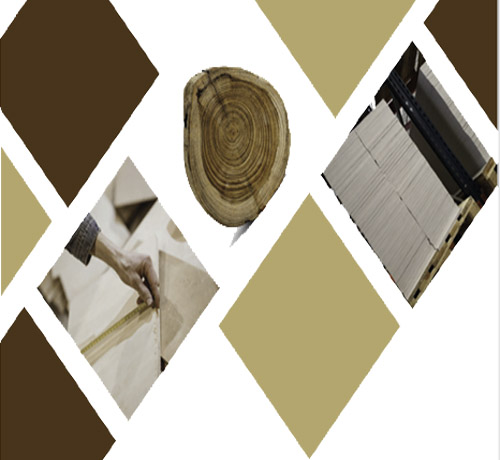
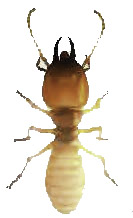
TERMITE
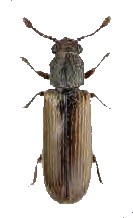
Lyctid Beetle WOOD BORER
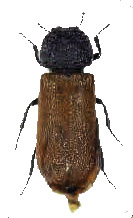
Bostrichid Beetle WOOD BORER
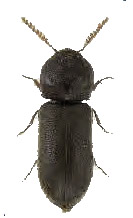
Anobid Beetle WOOD BORER
Subterranean termites are the most destructive termites in India. They build their nest underground and can also construct mounds that go above ground level. Mature colonies may consist of more than 2 million individuals and the queen is capable of laying 400 to 40,000 eggs per day. Termite colonies may survive for as long as 50 years.
Agenda 25 EC is a liquid termiticide formulation which provides long-term protection to plywood and solid wood against wood borers and termites. Agenda contains active ingredient fipronil which is also extensively used for soil treatment while conducting post-construction and pre-construction anti-termite treatment.
- Effective against wood borers & termites
- One product, multiple applications
- Glue line poisoning
- Solid wood dipping
- Veneers brushing
- Soil treatment - pre and post-construction ATT
- Long lasting wood protection
- Non-repellent formulation
- Gets easily transferred - Cascading effect
- Good soil binding properties with long term protection
- Colony management effect
- Flexible in use - can be diluted in water as well as oil
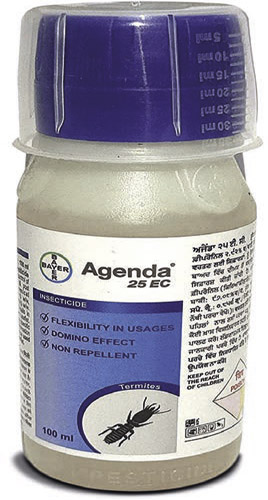
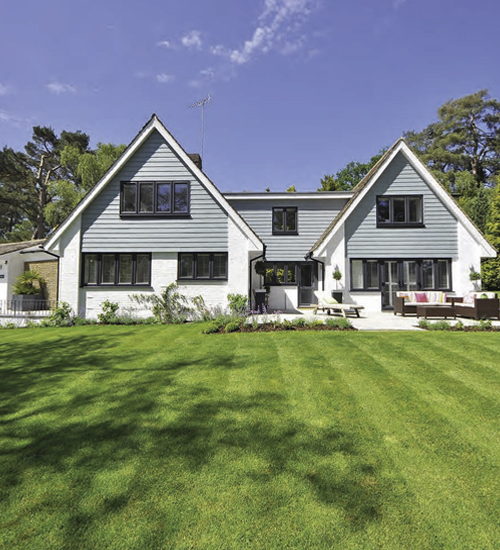
A Note On fipronil (2.5% EC) For Glue Line Poisining Of Plywood
The author is Mr. Mohandas. K. K., Retd. HOD, Chemistry & Asst. Director Indian Plywood Industries Research & Training Institute (IPIRTI)
It is an established practice or norm followed world over to change over to new generation pesticide as the pesticide in use would have lost its efficacy against the pests over a long period of its use. In the case of plywood industry the termite and borer would become immune or would develop resistance to the pesticide after a decade of its use. With regard to Chlorpyriphos which was in use since 1990's the changeover was to Bifenthrin in the year 2006 and it is time now to change over from Bifenthrin which has been in use for almost 15 years to a new generation pesticide.
Of late there have been reports from plywood industries about the increase in incidents of complaints from the consumers regarding termite and borer attack on plywood treated with Bifenthrin (2.5% EC). Some of the larger units in the country add up to 1 litre of Bifenthrin to 100 kg PF resin against the recommended dosage of 500 ml per 100 kg resin These incidents clearly indicate that the efficacy of Bifenthrin to impart resistance against termite and borer attack is on the decline or the insects are increasingly developing resistance or slowly getting immunized against Bifenthrin. Hence the need for changeover.
The latest in the series of pesticide used in the wood based panel industries world over is FIPRONIL (2.5% EC), a much effective and economical pesticide compared to all the pesticides used hitherto by the plywood and allied product manufacturing Industries.
The most important and advantageous characteristics of Fipronil over other pesticides used in the wood based industries is its Domino or Cascading effect on the pests. Once a termite attacks or nibbles the treated plywood it transmits the poison to other termites that come in contact.This process of transmission continues until the chain is broken. All those poisoned termites die and the fear of death spreads among other termites stopping them from attacking Fipronil treated plywood and other wood based products
L.P.I.R.T.I., Bengaluru had taken up an extensive study spanning over 36 months under a project sponsored by BAYER on the efficacy of their product AGENDA 25 EC (FIPRONIL 2.5% EC) to impart resistance to plywood and solid wood against termite and borer attack.
In this, discussion on the efficacy of Chlorpyriphos has been avoided. This Chlorinated Organo Phosphorous compound has been banned world over as it is considered carcinogenic (Cancer causing) and also causes skin rashes all over the skin of those allergic to this chemical.

Extract Of The Report On Fipronil (2.5% EC) For Glue Line Poisoning.
Extensive experiments were carried out on plywood made using 1.6 mm veneers as stipulated by the relevant specifications (IS:4873 and IS:4833) to find out the efficacy of Fipronil (2.5% EC) against borer and termite attack. Species selected was rubber wood, one of the most susceptible species and widely used for the manufacture of plywood. Dosage recommended for glue line poisoning in the report is 100 ml of Fipronil (2.5% EC) for 100 kg of PF /UF resin.
Recommended Dosage Of Fipronil (2.5% EC) And The Comparative Cost Difference To Bifenthrin 2.5% EC & Chlorpyriphos (50% EC)
As the thickness of veneers used in the experiment at IPIRTI for manufacture of plywood samples was 1.6 mm and the thicknesses of veneers normally used in the plywood industry are 1.8 mm and above, it is recommended to use 150 ml of Fipronil (2.5% EC) for species such as Gurjan, Eucalyptus, Poplar, Neem etc, And for highly susceptible species such as Rubber wood, Mango, Silver oak and Jungle wood majority of these species use of 200ml Fipronil (2.5% EC) for 100 kg PF/UF resin is recommended.
Of late the industry uses lots of low girth logs,especially of Eucalyptus, Poplar and Neem for manufacture of plywood. These low girth logs of these otherwise safe species are as susceptible as their highly susceptible counterparts as the percentage volume of sap portion would be quite high
Hence it is recommended to use 200ml Fipronil /100kgs Resin for all the species.Use of Bifenthrin for majority of these species has also been increased to 100 kg 600-700 ml/100kgs Resin from the recommended dosage of 500ml/100kgs Resin.

Comparison Of Various Pesticides Used For Glue Line Poisoning In India
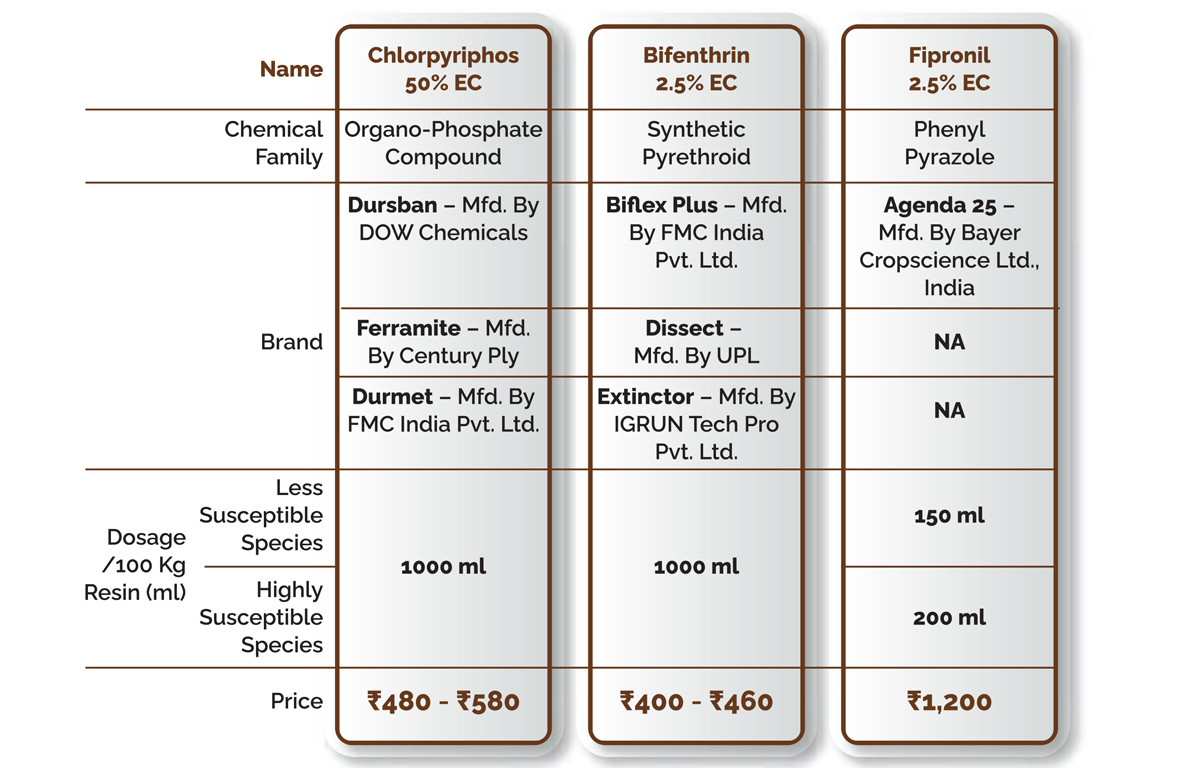
Superiority Of Fipronil Over Chlorpyriphos
An article titled "Superiority of Fipronil over Chlorpyriphos" published in the journal Entomological and Acarological Research, 2017, clearly indicated the superiority of Fipronil over Chlorpyriphos & states, preference should be given to Fipronil for barrier in the preconstruction step in relation to soil depths against subterranean termites.
Plywod Samples, Exposed For Thirty-Six Months Against Borer Attack Glue Line Treatment With Fipronil 2.5%WN EC Preservative Chemical
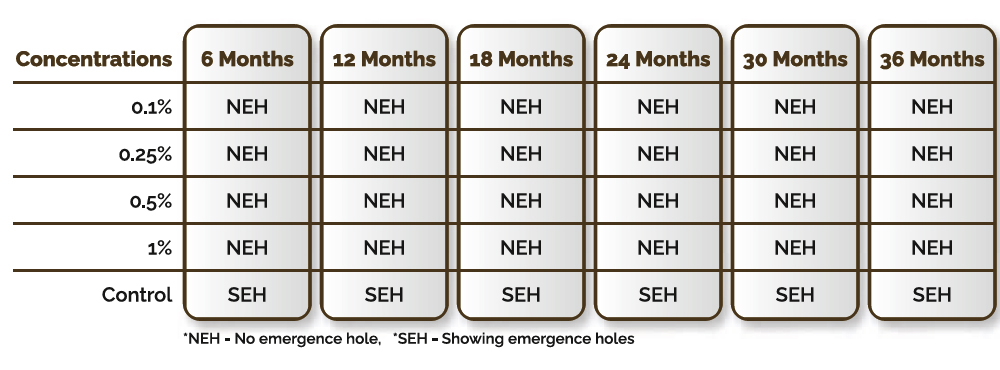
Plywod Samples, Exposed For Thirty-Six Months Against Termite Attack Glue Line Treatment With Fipronil 2.5%WN EC Preservative Chemical
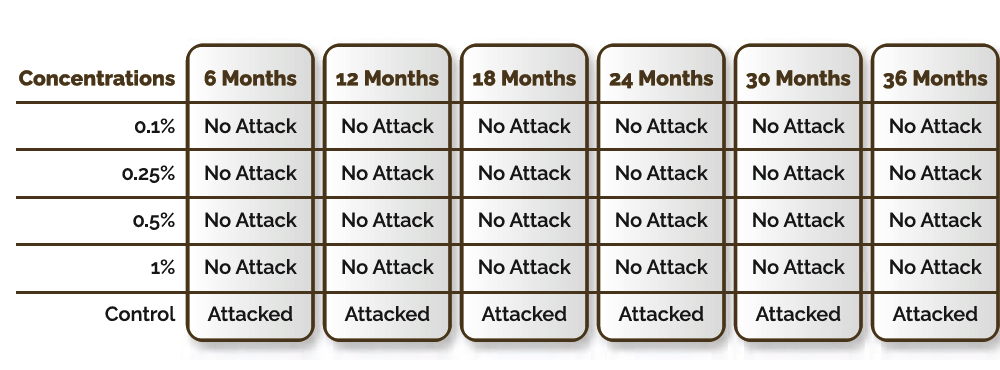
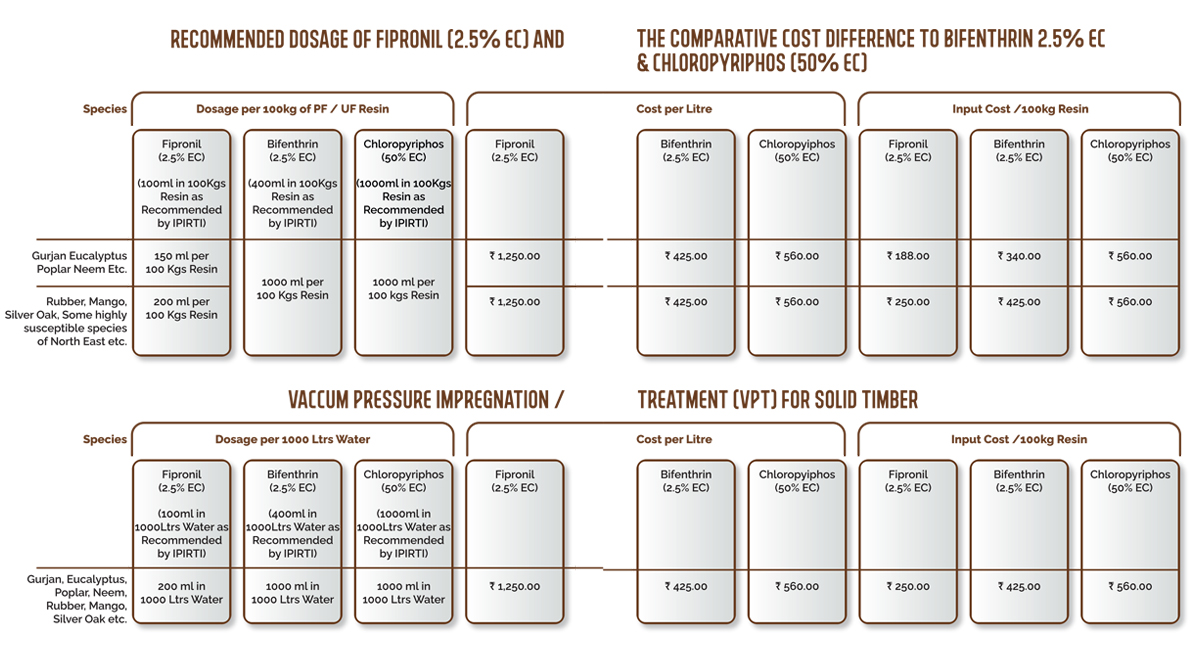
- The effective cost saving per 100 kg of resin is 150 - 3310. The efficacy of Fipronil over Bifenthrin is evident from the fact that the recommended dosage of Fipronil (2,5% EC) is only 200ml – 300ml per 100kgs resin as against 800 - 1000ml of Bifenthrin (2.5% EC) or 1000 ml of Chloropyriphos (50% EC) per 100 kg resin
- Hence it can be claimed that Fipronil (2.5% EC) is four times stronger or effective compared to Bifenthrin to impart resistance to Borer and Termite attack
- The quantity of Fipronil (2.5% EC) recommended is just 25% of Bifenthrin (2.5% EC)
- The effective cost saving per 100 kg of resin is 175 -* 310. The efficacy of Fipronil over Bifenthrin is evident from the fact that the recommended dosage of Fipronil (2.5% EC) is only 150 ml – 200 ml in 1000 Ltrs Water as against 800 - 1000 ml of Bifenthrin (2.5% EC) or 1000 ml of Chloropyriphos (50% EC) in 1000 Ltrs Water
- Hence it can be claimed that Fipronil (2.5% EC) is four times stronger or effective compared to Bifenthrin to impart resistance to Borer and Termite attack
- The quantity of Fipronil (2.5% EC) recommended is just 25% of Bifenthrin (2.5% EC)
